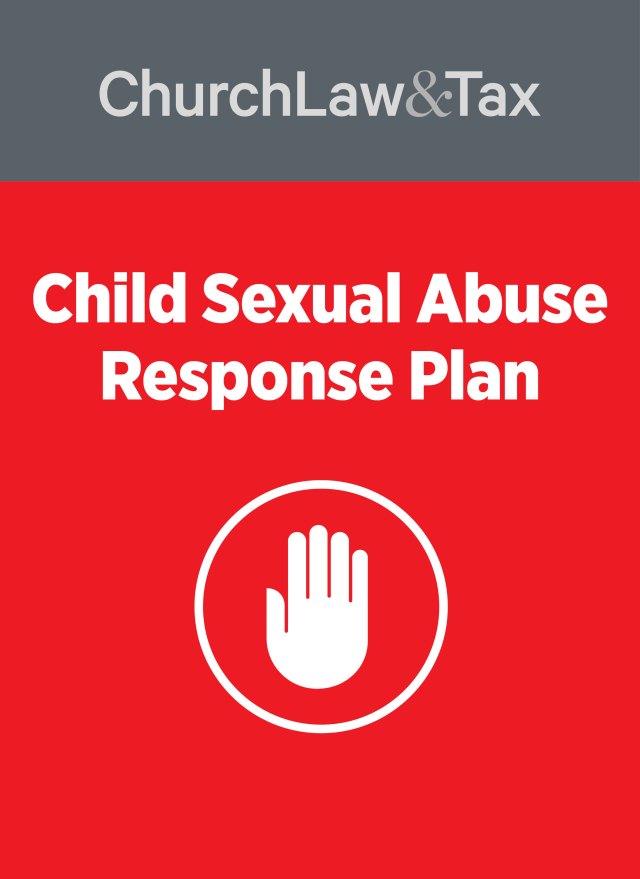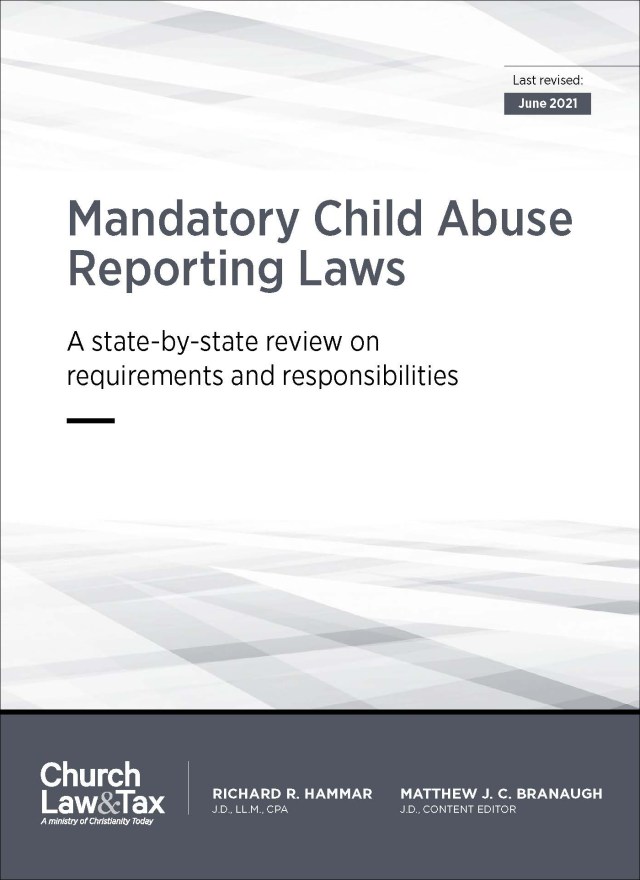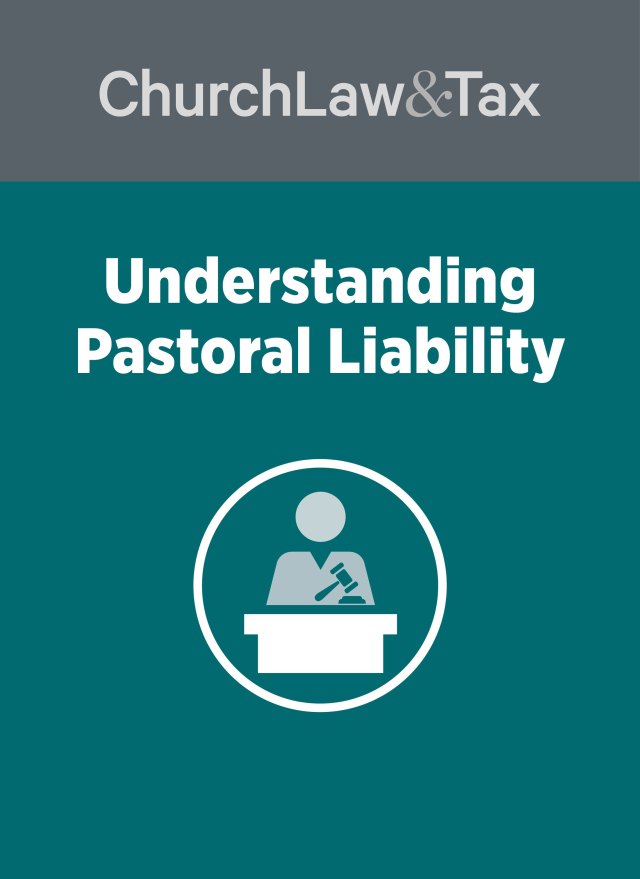• Key point 10-18.2. Most courts have refused to hold denominational agencies liable for the acts of affiliated ministers and churches, either because of first amendment considerations or because the relationship between the denominational agency and affiliated church or minister is too remote to support liability.
• Key point 10-18.3. There are several legal defenses available to a denominational agency that is sued as a result of the acts or obligations of affiliated clergy and churches. These include a lack of temporal control over clergy and churches; a lack of official notice of a minister’s prior wrongdoing in accordance with the denomination’s governing documents; lack of an agency relationship; the prohibition by the first amendment of any attempt by the civil courts to impose liability on religious organizations in a way that would threaten or alter their polity; and elimination or modification of the principle of joint and several liability.
Clergy Malpractice
Seduction of Counselees and Church Members
* A Texas court ruled that a regional church was not liable for a pastor’s sexual molestation of three minors since it had no duty to protect members of affiliated churches, and there was no agency relationship between the regional church and affiliated churches. A pastor engaged in sexual relations with three underage girls. After reaching the age of majority, the girls (“plaintiffs”) sued the pastor as well as their church and regional and national denominational agencies (the “regional church” and “national church”). A trial court dismissed all claims against the regional and national church. The plaintiffs appealed their case against the regional church, claiming that it had a duty to use reasonable care to prevent sexual abuse of children within its churches, and it breached that duty. They also claimed that the regional church was responsible for the pastor’s acts on the basis of the legal doctrine of respondeat superior.
duty to protect
A state appeals court ruled that “generally, there is no duty to control the conduct of others,” and so the regional church could not be liable for the molestation of the plaintiffs in an affiliated church unless it had a “duty” to protect them. Such a duty could arise, the court noted, in either of two ways: (1) the presence of a “special relationship,” or (2) a foreseeable risk of harm. The court concluded that Texas courts have only recognized a special relationship in the limited contexts of employer and employee, parent and child, and employer and independent contractor. So, for the regional church to be liable for the molestation of the plaintiffs, it had to be based on foreseeability of harm. This basis of liability involves a consideration not only of foreseeability of harm, but also the likelihood of that harm, and the impact of imposing a duty. The “foremost and dominant consideration of these factors is foreseeability of the risk—although it alone will not warrant imposing a duty.”
The plaintiffs insisted that the regional church knew or should have known of the risks of sexual abuse and exploitation of minors “in church programs and facilities as a result of those in positions of responsibility and authority utilizing that power to exploit young people.” The plaintiffs noted that officers of the regional church had testified that they were aware of the risk of child molestation in churches. The court disagreed, noting that the plaintiffs “seek to transform this general knowledge that such abuses occur into foreseeability in this particular instance.” It concluded that there was no evidence that the regional church “had any knowledge of allegations of sexual molestation by [the pastor] prior to his service at the church. Thus, his actions were not foreseeable to the regional church.”
The plaintiffs claimed that “the magnitude of the burden of guarding against the risk was slight,” and this supported the existence of a duty by the regional church to protect children in affiliated churches even if the specific risk posed by the offending pastor in this case was not foreseeable. In support of this argument, the plaintiffs noted that the regional church had instituted various procedures to protect minors from abuse in its own camping program. The court concluded, however, that “merely because it was done in one ministry, and in the youth camps of one district, does not necessitate finding it would be a slight burden to implement such policies throughout the entire district.” Further, the regional church had assumed a duty to implement such procedures in the context of its own camping program. But this did not support the plaintiffs’ claim that the regional church “should be required to assert control, and thereby assume a duty, over the churches, ministers, and members within its province.”
The court also rejected the plaintiffs’ argument that a duty should be imposed on the regional church to screen all volunteers and staff in every affiliated church within its territory. It observed, “The Texas Supreme Court expressly refused to impose a duty on the Boy Scouts of America to screen an adult volunteer about whom it had no knowledge and over whom it had no right of control …. Here it is undisputed that the regional church had no information from which it should have known of an unreasonable risk that [the pastor] would sexually abuse plaintiffs.” It noted that the regional church had never recommended the pastor to the church.
agency
The plaintiffs claimed the regional church exercised sufficient control over affiliated churches and ministers to make them its “agents.” As a result, the local church’s negligent hiring and supervision of the offending pastor could be imputed to the regional church. As evidence of an agency relationship the plaintiffs quoted from the testimony of a witness at the trial who testified, “It is my opinion that the regional church [and national church] have substantial control and influence over clergy such as [the offending pastor], have significant resources, and provide assistance and guidance to local churches and ministers in a number of ways including, but not limited to, that provided through the Youth Division, the Sunday School Division, and through policies such as that on Computers and the Internet which makes a number of detailed recommendations for the use of home computers.”
Plaintiffs also supported their agency theory by alleging that the denomination was hierarchical rather than congregational. The court dismissed this argument, noting that “we are aware of no authority, and plaintiffs cite none, whereby the larger organization was held vicariously liable under respondeat superior for the negligence of the local assembly on the basis of hierarchical organization.”
The court rejected the plaintiffs’ agency theory of liability. It concluded,
The issue is not whether the regional church had any control over [the local church] but whether it had any control over the church’s hiring and supervision of [the offending pastor]. In determining whether a principal is vicariously responsible for the conduct of an agent, the key question is whether the principal has the right to control the agent with respect to the details of that conduct. Plaintiffs do not refer this court to any evidence that the regional church had control over the hiring decisions made by the local church. The regional church submitted evidence that a local church has the right to determine standards for membership, of self-government, to select its pastor, to administer discipline to its members, and to acquire and hold title to its property. The [national church’s] Constitution provides that the method of selection of a Local Youth Committee, which includes a Youth Leader, is left to the discretion of the pastor. Thus the evidence shows the local assembly chooses the pastor and the pastor chooses the youth leader …. [Therefore] the regional church cannot be held vicariously liable for the alleged negligent hiring and supervision of [the offending pastor].
Application. This case is significant for the following reasons:
1. The court rejected the plaintiffs’ argument that the “foreseeability” of child molestation in churches imposed a duty on churches and denominational agencies to protect persons. The court agreed that the risk of child molestation in churches was foreseeable in a general sense, but this could not serve as the basis for liability. Rather, a church must have knowledge that a particular person poses a risk of harm to others to create a duty of protection. Since the regional church in this case had no prior knowledge that the offending pastor posed a risk of harm to minors, it had no duty to take affirmative steps to protect members in affiliated churches. Had the court reached the opposite conclusion, then every church and youth-serving charity would be automatically liable for the molestation of minors in an affiliated activity or program whether or not they had any knowledge of prior misconduct by the perpetrator.
2. The court concluded that a regional church’s implementation of screening and supervisory procedures in its youth camping program did not create a duty to protect minors in affiliated churches. It based this conclusion on two considerations. First, the fact that the regional church implemented such procedures in its own camping program did not establish that it would be a “slight burden” to do so throughout the regional church’s entire territory. Second, the regional church’s implementation of such procedures in its own camping program could not support the plaintiffs’ claim that it “should be required to assert control, and thereby assume a duty, over the churches, ministers, and members within its province.”
3. The court also rejected the argument that a duty should be imposed on the regional church to screen all volunteers and staff in every affiliated church within its jurisdiction.
4. The court refused to rule that a “hierarchical” church structure automatically makes a regional or national church liable for the acts of affiliated ministers and churches.
5. The court refused to find that the numerous examples of “control and influence” exercised by the regional and national church over local churches and ministers gave rise to an “agency” relationship making the regional and national church agencies liable for the acts of its “agents.” The court conceded that the regional church and national church had substantial control and influence over ministers, had significant resources, and provided assistance and guidance to local churches and ministers in a number of ways including its Youth Division, Sunday School Division, and computer and Internet policies. The court stressed that the issue was not whether the regional church had any general control over the local church but whether it had any control over the church’s hiring and supervision of the offending pastor. Since there was no evidence that the regional church had any authority to oversee or control a local church’s hiring decisions, there was no agency relationship with respect to those decisions and so the regional church could not be liable for the local church’s negligence in hiring the offending pastor. Williams v. United Pentecostal Church International, 115 S.W.3d 612 (Tex. App. 2003).
© Copyright 2004 by Church Law & Tax Report. All rights reserved. This publication is designed to provide accurate and authoritative information in regard to the subject matter covered. It is provided with the understanding that the publisher is not engaged in rendering legal, accounting, or other professional service. If legal advice or other expert assistance is required, the services of a competent professional person should be sought. Church Law & Tax Report, PO Box 1098, Matthews, NC 28106. Reference Code: m67 m40 c0404



